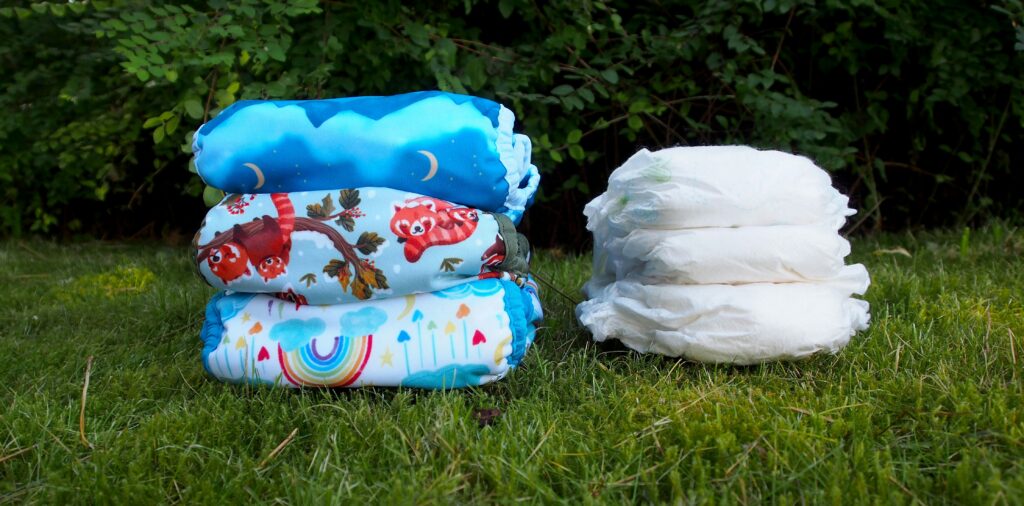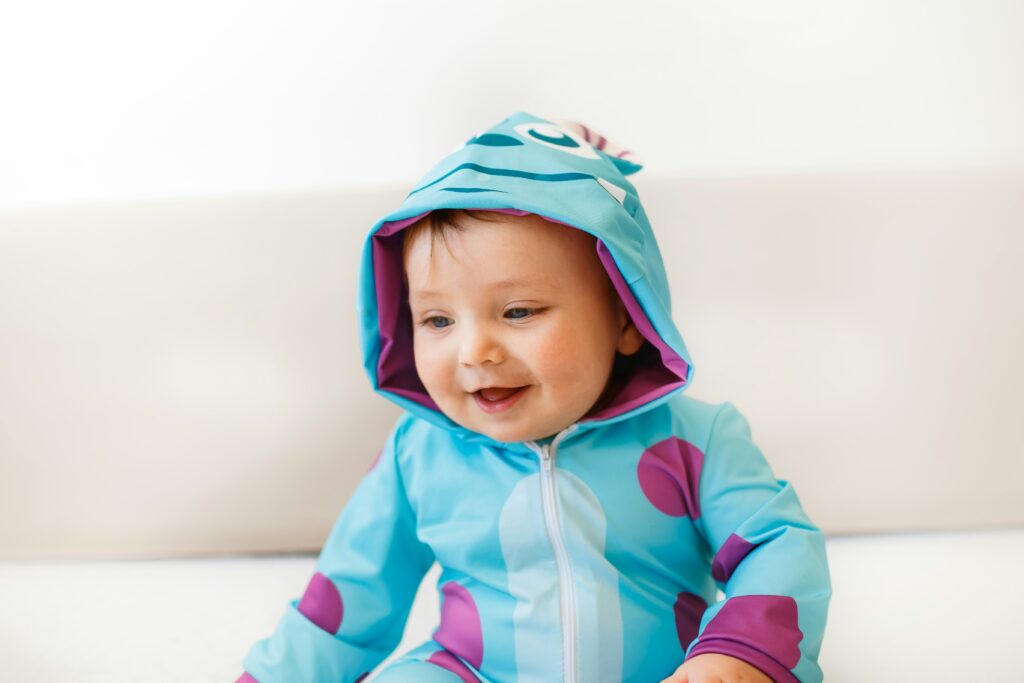Raising children is equal parts joy and chaos. The right essentials help parents stay prepared, reduce stress, and make daily routines smoother. Whether it’s choosing the best diapers, stocking up on safe skincare, or preparing for school, baby & kids essentials act as the backbone of parenting.
Diapers & Wipes
Diapers and wipes are part of the basic daily baby care, and choosing the right options can make a world of difference for both parents and little ones. Parents can choose between disposable diapers for convenience, cloth diapers for sustainability and cost savings, or eco-friendly alternatives that reduce environmental impact without sacrificing comfort. Sensitive-skin options, including fragrance-free wipes and hypoallergenic diapers, help prevent rashes and irritation, keeping your baby comfortable throughout the day and night. Having a reliable stock of diapers and wipes ensures that diaper changes are quick, hygienic, and stress-free, making these items an essential part of every baby’s daily routine.

Disposable, Cloth, and Eco-Friendly Choices
Choosing the right diaper type depends on convenience, budget, and sustainability. Disposable diapers are quick and easy for everyday use, while cloth diapers are reusable and cost-effective over time. Eco-friendly disposables offer a balance, providing convenience with biodegradable materials that are gentler on the environment.
| Product Type | Age Range | Key Feature | Price Range | Pros | Cons |
|---|---|---|---|---|---|
| Disposable Diapers | 0–24 months | Convenience, widely available | $0.20–$0.40 per diaper | Easy, no washing | More waste, can irritate skin |
| Cloth Diapers | 0–24 months | Reusable, eco-friendly | $10–$25 per diaper | Sustainable, cheaper long-term | Needs washing, more prep |
| Eco-Friendly Disposable | 0–24 months | Biodegradable, gentle | $0.25–$0.50 per diaper | Better for environment | Higher cost |
Sensitive-Skin Solutions
Sensitive-skin solutions in diapers and wipes are designed specifically to protect babies with delicate or easily irritated skin. These products are typically hypoallergenic, fragrance-free, and made with gentle, natural materials that reduce the risk of rashes and discomfort. Many sensitive-skin diapers also feature breathable fabrics and soft, flexible designs to prevent chafing, while wipes are often enriched with soothing ingredients like aloe or chamomile to calm the skin during each change. Choosing these options can make diapering a more comfortable experience for babies and give parents peace of mind knowing their child’s skin is cared for with extra gentleness.
Daily Checklist
- Diapers (disposable, cloth, or eco-friendly)
- Baby wipes
- Diaper cream/rash prevention
- Changing mat
- Diaper bag essentials for outings
Feeding & Nutrition
Feeding and nutrition are at the heart of a baby’s growth and development, and having the right essentials makes daily meals easier for both parents and little ones. Infant formula provides balanced nutrition for babies who aren’t exclusively breastfed, while toddler snacks and vitamins support healthy growth as children start exploring solid foods. Bottles, sippy cups, and spill-proof snack containers make feeding more convenient, reducing mess and frustration. Stocking up on these essentials ensures that every meal is nutritious, safe, and stress-free, helping babies develop healthy eating habits from the very start.
Source: HealthyChildren.org’s feeding guidance
Formula, Snacks, and Vitamins
Feeding your baby and toddler the right nutrition is essential for healthy growth. Infant formula provides complete nutrition when breastfeeding isn’t possible, while toddler snacks and vitamins help support energy, development, and immunity. Choosing the best formula, healthy snacks, and essential vitamins simplifies daily feeding routines for parents.
Bottles, Sippy Cups, and Containers
Choosing the right bottles, sippy cups, and snack containers makes feeding easier for both babies and toddlers. Anti-colic bottles reduce discomfort, while spill-proof sippy cups help toddlers drink independently. Portion-friendly snack containers keep mealtime tidy and organized, making daily feeding routines smoother for parents.
Feeding Essentials Checklist
- Infant formula or breast milk storage
- Bottles and nipples (anti-colic if needed)
- Sippy cups and toddler snack containers
- Burp cloths
- Bibs
Bath & Skincare
Bath and skincare routines are more than just about keeping your baby clean—they’re valuable moments for bonding and connection. Gentle shampoos, lotions, rash creams, and baby-safe sunscreen protect delicate skin while ensuring your little one stays comfortable and healthy. Bath tubs, soft washcloths, and playful bath toys turn daily hygiene into a fun, interactive experience that strengthens the parent-child relationship. By making bath time enjoyable and nurturing, parents not only care for their baby’s skin but also create calm, loving routines that help build trust and security from the earliest days.
Source: Bathing & Skin Care – HealthyChildren.org
Shampoo, Lotion, and Sunscreen
Gentle skincare is essential for babies and toddlers to keep their skin healthy and protected. Mild baby shampoo and nourishing lotion prevent dryness and irritation, while baby-safe sunscreen shields delicate skin from harmful UV rays. Using the right products makes daily bath and skincare routines safe, simple, and effective for parents.
Bath Tubs, Washcloths, and Toys
Bath time is both essential and fun for babies and toddlers. A safe baby bathtub and soft washcloths make cleaning comfortable and convenient, while playful bath toys turn routine baths into enjoyable moments. Having the right bath setup helps parents keep daily bathing simple, safe, and engaging for little ones.
Bath & Skincare Checklist
- Baby bathtub or bath support
- Soft washcloths and towels
- Gentle baby shampoo and body wash
- Baby lotion or cream
- Bath toys for toddlers
Sleep Essentials
Sleep essentials are crucial for both babies and parents, as a well-rested baby often means a well-rested parent. Items like swaddles, sleep sacks, soft crib sheets, and breathable blankets provide comfort and safety, helping babies settle more easily. Pacifiers, night lights, and white noise machines can create a soothing sleep environment that encourages longer, more restful naps and nighttime sleep. By establishing consistent and comfortable sleep routines with the right essentials, parents can support their baby’s development while also protecting their own rest and well-being.
Source: Sleep – HealthyChildren.org

Swaddles, Sleep Sacks, and Sheets
Creating a safe and comfortable sleep environment is crucial for babies and toddlers. Swaddles help calm newborns, while breathable sleep sacks provide warmth without loose blankets. Soft crib sheets complete a cozy setup, making bedtime routines easier and ensuring a restful night for both parents and children.
Pacifiers, Night Lights, and Sound Machines
Small tools can make a big difference in a baby’s sleep routine. Pacifiers help soothe and calm infants, night lights provide gentle visibility without disrupting sleep, and white noise machines mask background sounds to encourage longer, deeper rest. Using these essentials simplifies nightly routines and promotes better sleep for both babies and parents.
Sleep Comparison Table
| Sleep Item | Age Range | Purpose | Pros | Cons |
|---|---|---|---|---|
| Swaddle | 0–3 months | Calm newborn, promote sleep | Helps baby feel secure | Must stop after rolling over |
| Sleep Sack | 3–24 months | Warmth without loose blankets | Safe alternative to blankets | Needs proper sizing |
| Crib Sheets | 0–24 months | Comfort and hygiene | Easy to wash, soft | Needs frequent changing |
| Night Light | 0–24 months | Comfort and visibility | Reassuring for baby | Can disturb sleep if too bright |
| White Noise Machine | 0–24 months | Helps baby sleep | Blocks background noise | Needs supervision of volume |
Sleep Essentials Checklist
- Swaddles or sleep sacks
- Crib sheets and mattress protector
- Pacifiers
- Night light
- White noise machine
Clothing Basics
Clothing basics are essential for keeping babies comfortable, protected, and ready for everyday activities. Staples like onesies, pajamas, socks, mittens, and seasonal layers provide practicality and ease for daily dressing, while also allowing for quick changes during messes or diaper accidents. Choosing between organic and regular cotton gives parents the option of softer, chemical-free fabrics or affordable, durable everyday wear. Having a well-stocked wardrobe of clothing basics ensures that babies stay cozy, parents stay organized, and dressing routines remain simple and stress-free.

Everyday Baby Clothing
Comfortable, practical clothing is essential for daily life with a baby. Onesies, pajamas, socks, and seasonal layers keep little ones cozy, while extra outfits help parents stay prepared for spills and messes. Stocking up on everyday clothing essentials makes dressing routines easier and keeps babies happy throughout the day.
Organic vs. Regular Cotton
Choosing the right fabric can make a difference for a baby’s comfort and skin health. Organic cotton is soft, chemical-free, and gentle on sensitive skin, while regular cotton is affordable, widely available, and perfectly safe for daily use. Understanding the benefits of each helps parents select clothing that balances comfort, quality, and practicality.
Clothing Checklist
- Onesies and pajamas (5–7 sets)
- Socks, mittens, hats
- Seasonal outerwear (light jacket, sweater, raincoat)
- Extra outfits for daycare or outings
Toys & Development
Toys and development are essential for a baby’s growth, learning, and curiosity. Educational toys, Montessori-inspired items, teethers, and interactive books help develop motor skills, problem-solving abilities, and sensory awareness from an early age. Play gyms, stacking toys, and age-appropriate books create opportunities for both independent exploration and parent-child interaction, making playtime a fun and meaningful part of daily routines. By choosing toys that stimulate learning and creativity, parents can support healthy development while fostering curiosity and confidence in their children.

Educational Toys and Montessori Items
Choosing the right toys supports a child’s growth and development every day. Montessori-inspired toys, shape sorters, and stacking activities encourage problem-solving, fine motor skills, and independent play. Integrating educational toys into daily routines helps toddlers learn through fun, hands-on experiences.
Play Gyms, Books, and Stackers
Interactive play helps babies and toddlers explore, learn, and grow every day. Play gyms support tummy time and motor skill development, while soft books and stacking toys encourage early language, problem-solving, and coordination. Including these essentials in daily routines makes playtime both fun and educational.
Toys & Development Checklist
- Montessori or educational toys
- Soft books and board books
- Activity mats and play gyms
- Stacking toys and simple puzzles
School & Care Supplies
School and care supplies are key for helping children stay organized, comfortable, and prepared for their daily routines. Essentials like backpacks, lunch boxes, and water bottles keep meals and belongings accessible and manageable, while daycare items such as spare clothes, nap mats, and personalized labels ensure nothing gets lost or overlooked. Having the right supplies not only supports a child’s independence and readiness but also reduces stress for parents, making drop-offs, pick-ups, and daily activities smoother and more enjoyable for the whole family.
Backpacks, Lunch Boxes, and Water Bottles
Everyday school essentials help children stay organized and prepared. Lightweight backpacks, easy-to-clean lunch boxes, and spill-proof water bottles make mornings smoother and lunchtime hassle-free. Stocking up on these daily items ensures children have everything they need for school or daycare.
Daycare Gear and Labels
Keeping daycare items organized helps parents and kids stay stress-free every day. Spare clothes, nap mats, and personalized labels ensure belongings don’t get lost, while clearly labeled bags and containers make drop-offs and pick-ups smoother. Having the right daycare essentials simplifies daily routines and keeps children prepared and comfortable.
School & Care Supplies Checklist
- Backpack and lunch box
- Water bottle
- Spare clothes for daycare
- Nap mat or blanket
- Labels for belongings
Baby & Kids Essentials Master Checklist
Here you can find a checklist for all the necessary daily essentials that you’ll potentially need for you and your child!
Diapers & Wipes
Feeding & Nutrition
Bath & Skincare
Sleep Essentials
Clothing Basics
Toys & Development
School & Care Supplies
FAQs
Not necessarily. Many parents stick to one type depending on convenience, budget, and sustainability. Some mix cloth for home and disposable for outings.
Typically every 2–3 hours, or immediately after soiling. Frequent changes help prevent rashes.
Yes, modern biodegradable and eco-friendly diapers perform similarly to standard disposables, though prices can be slightly higher.
Use frequent diaper changes, gentle wipes, and a protective cream. Avoid fragranced products for sensitive skin.
Sippy cups are usually introduced around 6–9 months when babies can sit independently. Solid foods often start around 6 months.
Both are nutritionally sufficient. Breastfeeding is recommended if possible, but formula is a safe alternative. Some parents combine both.
Choose healthy, easy-to-eat options: fruit slices, yogurt, soft vegetables, or toddler pouches.
Use anti-colic bottles, pre-measured formula, and bibs. Burp your baby frequently to reduce spitting up.
Newborns usually need 2–3 baths per week. Toddlers can be bathed daily if needed.
Choose mild, fragrance-free products labeled for babies to avoid irritation.
Use gentle moisturizers after baths, avoid hot water, and choose fragrance-free products.
For babies under 6 months, minimize direct sun exposure and use protective clothing. For older infants, use baby-safe sunscreen.
Place babies on their back on a firm mattress, keep the crib clear of loose bedding, and avoid soft toys.
Usually around 3–4 months, or when the baby shows signs of rolling over.
Soft, dim night lights are usually fine. Avoid bright lights that can disrupt circadian rhythms.
They can help babies sleep by masking background noise, but keep volume at a safe level.
Around 5–7 sets of each is typical, plus extras for messy days.
Organic cotton is softer and chemical-free, which can be gentler on sensitive skin, but regular cotton is perfectly safe.
Layer clothing for temperature control and avoid overheating. Choose breathable fabrics.
Newborns: soft toys, rattles, and sensory books.
Toddlers: stacking toys, push toys, Montessori-inspired items.
Rotate toys regularly, follow age-appropriate guides, and incorporate simple games and books.
They encourage motor skills, problem-solving, and early learning, but simple toys and interaction matter most.
Backpack, lunch box, water bottle, spare clothes, nap mat, and labels.
Use personalized labels, color-coded bags, and consistent routines.
Lightweight, ergonomic backpacks with simple closures, and easy-to-clean lunch boxes work best.
Conclusion
Baby & kids essentials aren’t just about products—they’re about the rhythms of daily life for parents and children. From diaper changes to snack times, bath routines to bedtime, these must-haves give a real sense of what parenting looks like day-to-day. Understanding and having the right essentials on hand turns the chaos of daily care into smoother, more manageable routines, helping families thrive one little moment at a time.
Disclaimer: For trusted parenting resources, visit HealthyChildren.org, created by the American Academy of Pediatrics.
Home

Household Essentials

Food & Drinks

Pet Supplies

Everyday Basics


